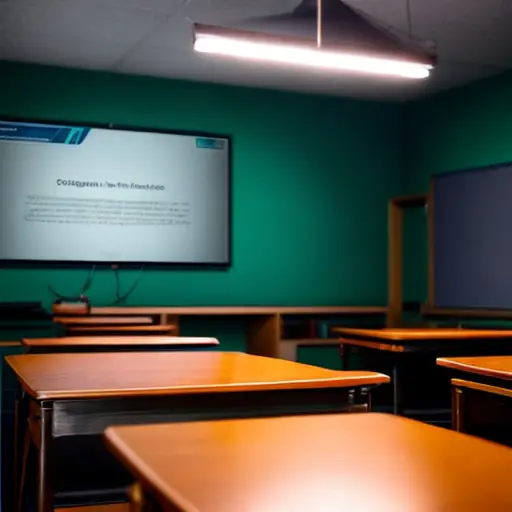The Power of Mindfulness: Understanding its Benefits for Classroom Learning
Incorporating mindfulness in the classroom can have a transformative impact on the learning experience for both students and teachers. By cultivating a practice of mindfulness, individuals can develop greater self-awareness, emotional regulation, and focus, which are essential skills for academic success. Techniques such as deep breathing exercises, guided meditation, and mindful listening can help students manage stress, improve concentration, and enhance their overall well-being. By integrating mindfulness practices into daily routines, educators can create a more positive and supportive learning environment that fosters a sense of calm, resilience, and empathy among students. Ultimately, embracing mindfulness in the classroom can empower students to become more engaged, compassionate, and successful learners.
Creating a Mindful Environment: Strategies for Cultivating Focus and Emotional Well-being
An interesting fact about incorporating mindfulness in the classroom is that research has shown that just a few minutes of mindfulness practice each day can significantly improve students' attention spans, emotional regulation, and overall well-being. By incorporating simple mindfulness exercises, such as deep breathing or guided meditation, into the daily routine, teachers can create a calm and focused learning environment that enhances students' ability to learn and retain information.
In order to create a mindful environment in the classroom, educators can implement various strategies that promote focus and emotional well-being among students. One effective approach is to start each day with a brief mindfulness exercise, such as a guided meditation or mindful breathing activity, to help students center themselves and set a positive tone for the day. Additionally, incorporating mindfulness practices into transitions between activities, such as mindful walking or stretching exercises, can help students stay present and engaged throughout the day. By modeling mindfulness and providing opportunities for students to practice these techniques, educators can cultivate a culture of mindfulness in the classroom that supports students' academic success and emotional growth.
Mindful Teaching Techniques: Integrating Mindfulness into Lesson Plans and Instruction

Integrating mindfulness into lesson plans and instruction can enhance the overall learning experience for students and teachers alike. One effective mindful teaching technique is to incorporate short mindfulness activities throughout the day, such as mindful breathing exercises or body scans, to help students refocus and recharge their attention. By incorporating these brief moments of mindfulness into lesson transitions or before challenging tasks, educators can create a more conducive learning environment that promotes student engagement and emotional well-being.
Another mindful teaching technique is to infuse mindfulness into the curriculum by incorporating themes of self-awareness, empathy, and emotional regulation into lesson content. For example, teachers can incorporate literature or discussions that explore characters' emotional experiences or perspectives, encouraging students to reflect on their own emotions and responses. By integrating mindfulness into academic content, educators can help students develop a deeper understanding of themselves and others, fostering a more compassionate and inclusive classroom community.
In addition to incorporating mindfulness into lesson content, educators can also model mindfulness in their teaching practices by demonstrating present-moment awareness, active listening, and non-judgmental acceptance. By embodying these qualities, teachers can create a positive and supportive learning environment that encourages students to cultivate their own mindfulness practices. Furthermore, educators can provide opportunities for students to practice mindfulness in various forms, such as mindful movement activities, gratitude exercises, or mindful journaling, to help students develop their own mindfulness skills and coping strategies.
By integrating mindfulness into lesson plans and instruction, educators can create a more holistic and student-centered approach to teaching that supports students' academic, social, and emotional growth. Through mindful teaching techniques, educators can empower students to develop essential skills such as self-regulation, empathy, and resilience, which are crucial for success both inside and outside the classroom. Ultimately, by incorporating mindfulness into teaching practices, educators can create a more mindful and compassionate learning environment that nurtures students' overall well-being and academic achievement.
Nurturing Mindful Students: Empowering Self-awareness and Resilience in the Classroom
A fun fact about incorporating mindfulness in the classroom is that even a simple activity like 'mindful eating' can significantly improve students' focus and concentration. By encouraging students to eat a small snack mindfully, paying attention to the taste, texture, and smell, they can develop a greater awareness of the present moment. This practice not only helps students appreciate their food but also enhances their ability to be fully engaged in other classroom activities.
Nurturing mindful students involves empowering them with self-awareness and resilience through intentional mindfulness practices in the classroom. Educators can encourage students to reflect on their thoughts, emotions, and behaviors through activities such as mindful journaling, gratitude exercises, or self-reflection prompts. By fostering self-awareness, students can develop a deeper understanding of themselves and their responses to various situations, ultimately enhancing their emotional intelligence and decision-making skills. Additionally, incorporating mindfulness practices that promote resilience, such as guided visualization for overcoming challenges or mindful breathing for stress management, can help students build coping strategies and adaptability in the face of adversity. By nurturing mindful students in these ways, educators can support their holistic development and well-being throughout their academic journey.


